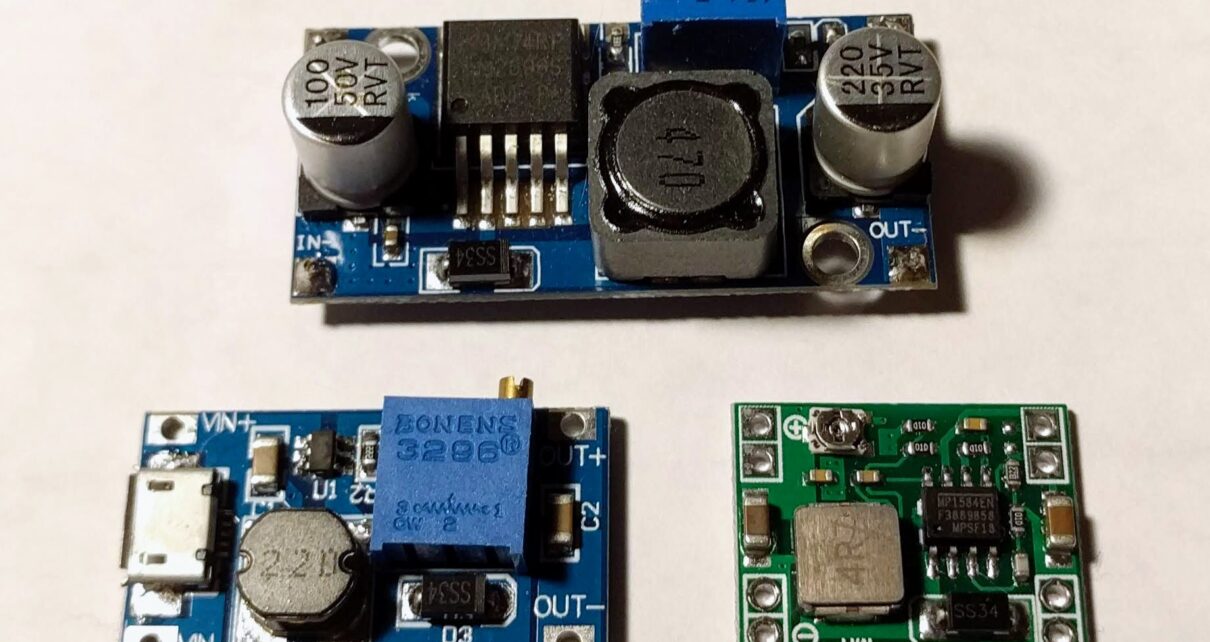Motors and inverters are increasingly being used in a variety of applications, including industrial automation, robotics, electric vehicles, solar energy, white goods, and power tools. With this expansion comes the need to improve efficiency, reduce costs, reduce footprint, and simplify overall design.
While designing inverter power electronics and custom motors using discrete IGBTs to meet specific requirements may seem appealing, doing so can be costly in the long run and cause design schedules to slip.
Designers can instead use off-the-shelf IGBT modules, which integrate multiple power devices into a single package. These modules support designers’ desire to create compact systems with a minimal number of interconnects, simplifying assembly, reducing time-to-market and cost, and improving overall performance. IGBT modules enable the development of efficient and cost-effective motor drives and inverters when combined with an appropriate IGBT driver.
Motor Types and Efficiency Requirements
The IEC/EN 60034-30 standard classifies motor efficiency into five categories, IE1 through IE5. The National Electrical Manufacturers Association (NEMA) has a rating scale that ranges from “standard efficiency” to “ultra-premium efficiency.”
In order to meet the higher efficiency standards, electronic drives must be used. Electronically driven AC induction motors can meet IE3 and IE4 requirements. In order to meet IE5 efficiency levels, more expensive permanent magnetic motors and electronic drives are required.
The advancement of low-cost microcontrollers (MCUs) allows for the designers to use vector control, also known as field-oriented control, a variable-frequency drive control method wherein the stator currents of a 3-phase alternating current (AC) motor are identified as two orthogonal components that can be represented by a vector.
To keep the measured current components at their desired values, proportional-integral (PI) controllers can be used. The VFD’s pulse-width modulation defines transistor switching based on stator voltage references provided by the PI current controllers.
FOC was originally designed for high-performance systems, but due to its smaller motor size, lower cost, and lower power consumption, it is becoming increasingly appealing for lower-cost applications as well. FOC is increasingly displacing lower performance single-variable scalar volts-per-Hertz (V/f) control due to the increasing availability of low-cost high-performance MCUs.
Brushless DC (BLDC) and permanent magnet synchronous motors (PMSM) are the two main types of permanent magnet motors in use today. Both of these advanced motor designs necessitate the use of power electronics for both drive and control.
BLDC motors are long-lasting, energy-efficient, and low-cost. PMSM motors have the same characteristics as BLDC motors but produce less noise and have slightly higher efficiencies. Both motor types are commonly used with Hall sensors, but they can also be used in sensorless designs. PMSM motors are used in high-performance applications, while BLDC motors are used in lower-cost designs.
BLDC Motors
- Control is easier (6 steps) and only DC currents are needed.
- At commutations, torque ripple occurs.
- Lower performance and lower costs (compared with PMSM)
PMSM Motors
- Typically found in servo drives that include an integrated shaft encoder.
- Control that is more sophisticated (needs 3-phase sinusoidal PWM)
- When commuting, there is no torque ripple.
- More torque, more efficiency
- Costlier but more effective (compared with BLDC)
Inverter Overview
The efficiency of an inverter is the amount of DC input power that is converted to AC power on the output. The efficiency of high-quality sine wave inverters ranges between 90 and 95%. Lower-quality modified sine wave inverters are less expensive, but less efficient, typically achieving 75-85 percent efficiency.
Inverters with higher frequencies are typically more efficient than those with lower frequencies. The efficiency of an inverter is also affected by the load on the inverter. Power electronic drives and controls are required by all inverters.
There are three types of efficiency rankings for photovoltaic inverters:
- Peak efficiency denotes the inverter’s performance at maximum power output. It displays the maximum point for a specific inverter and can be used as a quality criterion.
- European efficiency is a weighted number that takes into account how frequently the inverter will operate at various power outputs. It can be more useful than peak efficiency in some cases because it shows how the inverter is performing at different output levels.
- The California Energy Commission (CEC) efficiency is a weighted efficiency, like the European efficiency, but it makes different assumptions about weighting factors.
The main difference between European and CEC efficiencies is that the assumptions about the importance of each power level for a specific inverter in the former case are based on data from Central Europe, while in the latter case they are based on data from California.
Igbt Basics
An isolated gate bipolar transistor (IGBT) is a type of bipolar transistor with an isolated gate structure. The gate is, in essence, a MOSFET. As a result, the IGBT combines the advantages of a bipolar transistor’s high current carrying capacity and high blocking voltages with the capacitive, low power control of a MOSFET.
An IGBT’s conceptual structure shows the MOSFET that forms the insulated gate and the bipolar transistor structure that serves as the power handling section.
An IGBT’s basic operation is straightforward: a positive voltage UGE from gate to emitter (E) turns on the MOSFET. The voltage applied to the collector (C) can then drive the base current through the bipolar transistor and the MOSFET, causing the bipolar transistor to turn on and allow the load current to flow. A voltage of UGE 0 volts turns off the MOSFET, interrupts the base current, and turns off the bipolar transistor.
While the concept is simple, developing hardware to control an IGBT – a gate driver – can be a difficult task due to numerous performance nuances in real devices and circuits. Most of the time, it is not required. As integrated solutions, semiconductor manufacturers provide suitable gate drivers with a wide range of functions and capabilities. As a result, matching IGBT modules with appropriate gate drivers is critical.
IGBT modules come in a variety of configurations. The largest sizes have ratings of 3,300 volts or higher and are intended for megawatt installations such as uninterruptible power supplies, renewable energy systems, and very large motor drives. Medium-sized modules typically have ratings ranging from 600 to 1700 volts and are used in a variety of applications such as electric vehicles, industrial motor drives, and solar inverters.
IGBT modules are available in a variety of packages. Voltage ratings typically range from 600 to 3,300 volts. (Photo courtesy of Fuji Electric)
The smallest devices are known as integrated power modules, and they are rated for 600 volts. They can include built-in gate drivers and other components for motor drives in smaller industrial systems and consumer white goods. When compared to other types of power switching components, IGBTs operate at higher power levels and lower switching frequencies.
For common power switching devices, the power range versus switching frequency is plotted (Image source: Infineon Technologies)
For Traction Inverters, Igbt Module Evaluation Board
NXP Semiconductors’ FRDMGD3100HBIEVM gate driver power management evaluation board, based on its MC33GD3100A3EK half-bridge gate driver IC, is available for designers of high voltage traction inverters. The FS820R08A6P2BBPSA1 IGBT module from Infineon is specifically designed for use with this evaluation board. It is a complete solution that includes half-bridge gate driver ICs, a DC link capacitor, and a translator board that connects to a PC and provides control signals.
The following are examples of target applications:
- High voltage DC/DC converters and traction motors for electric vehicles
- On-board and external chargers for electric vehicles
- Other applications for high-voltage alternating current motor control
Igbt Module Driver 150 Mm X 62 Mm X 17 Mm
The ISO 5852SD WEBM-017 was developed for designers of motor drives, solar inverters, HEV/EV chargers, wind turbines, transportation, and uninterruptible power supply systems.
It is a dual-channel isolated gate driver board that provides the drive, bias voltages, protection, and diagnostics required for silicon IGBT modules and generic half-bridge silicon carbide (SiC) MOSFET housed in standard 150 mm 62 mm 17 mm packages.
Intelligent Power Module Eval Boards
The STGIPS20C60 IGBT intelligent power module is available on the 2,000 watt STEVAL-IHM028V2, 3-phase motor control evaluation board from STMicroelectronics.
The evaluation board is a DC/AC inverter that produces a waveform for driving 3-phase motors such as PMSM motors or induction motors with power ratings of up to 2000 watts in HVAC (air conditioners), white goods, and high-end single-phase power tools. This EVB can be used by designers to implement FOC designs with three-phase alternating current motors.
The main section of this EVM is a universal, populated, and fully evaluated design that consists of a 3-phase inverter bridge based on an SDIP 25L package’ IGBT power module, which is mounted on a heatsink. All power IGBT switches with high-voltage gate drivers and freewheeling diodes are integrated into the intelligent power module.
This level of integration reduces PCB space and assembly costs while also increasing reliability. The board is designed to work with single-phase power supplies ranging from 90 to 285 volts AC, as well as inputs ranging from 125 to 400 volts DC.
Conclusion
Customizing motor and inverter power electronics with discrete IGBTs to meet specific requirements can be costly in the long run and cause design schedules to be pushed back. Designers can instead use off-the-shelf IGBT power modules, which integrate multiple power devices into a single package. Such modules support designers’ desire to create compact systems with a minimal number of interconnects, simplifying assembly, reducing time-to-market and cost, and improving overall performance.
Designers can use an IGBT module in conjunction with an appropriate IGBT driver to create cost-effective and compact inverters and motor drives that meet performance and efficiency standards, as demonstrated.





